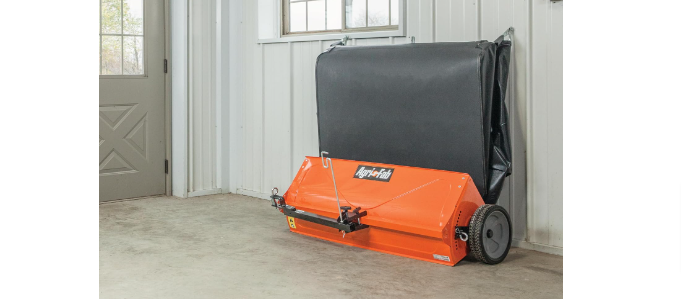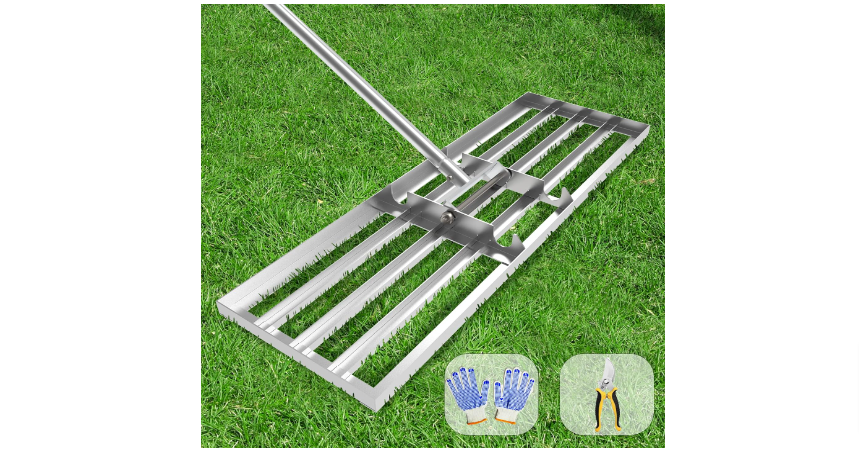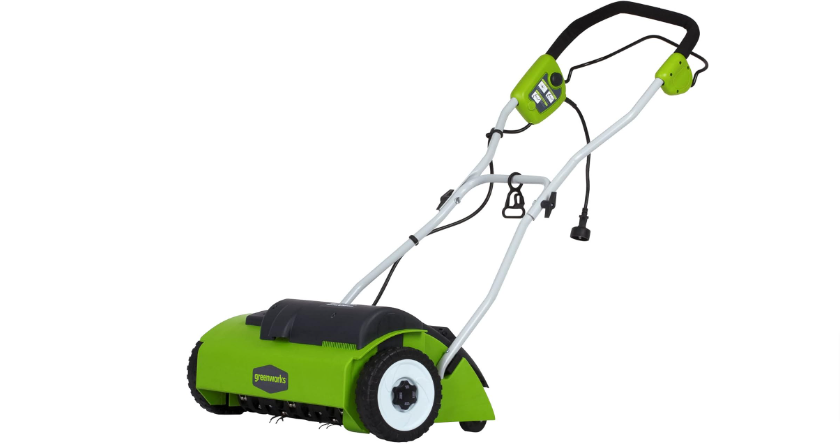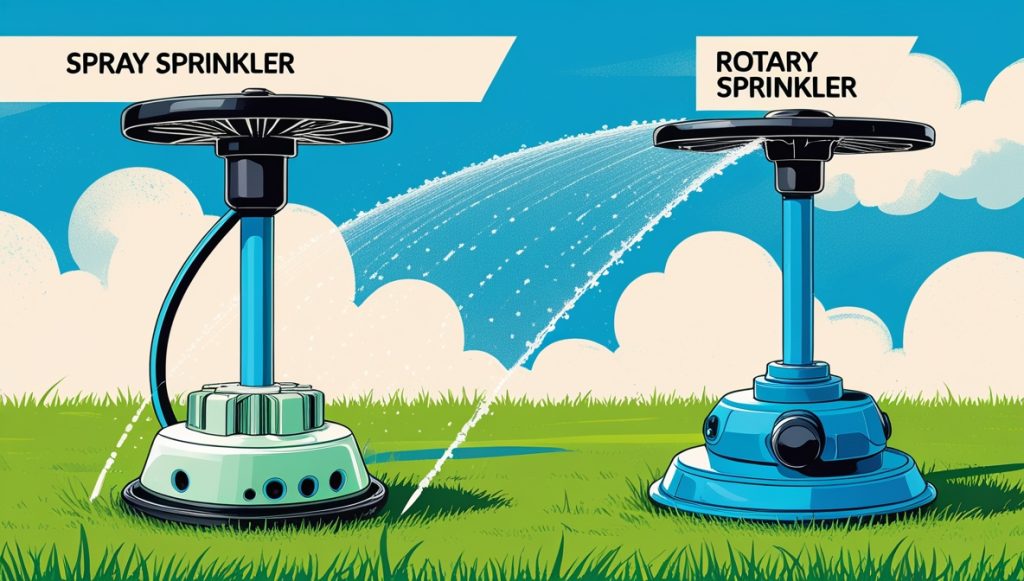Keeping your lawn mower blades sharp isn’t just about making mowing easier—it’s essential for a healthy lawn. A sharp blade cuts grass cleanly, helping it recover faster and look better, while a dull blade tears at the grass, leaving ragged edges that turn brown and make the lawn more prone to disease. By sharpening your mower blades at least once a season or every 20-25 hours of use, you’ll get a cleaner cut, save on fuel or battery power, and extend the life of your mower.
Contents
Gather Your Tools and Materials
Before you start sharpening, it’s essential to have the right tools and materials on hand. This will make the process smoother, safer, and more effective. Here’s a list of what you’ll need to get the job done right.
Essential Tools
Wrench or Socket Set: Used to remove the mower blade safely and securely.
Blade Sharpener: A variety of tools can be used, such as a hand file, grinding wheel, or rotary tool, depending on your preference and what you have available.
Bench Vise or Clamp: This will keep the blade stable as you work, making sharpening easier and reducing the risk of slipping.
Blade Balancer (optional but recommended): Ensures the blade is balanced after sharpening, which helps prevent vibrations during mowing.
Safety Gear: Protect your hands and eyes by wearing gloves and safety glasses.
Optional Tools to Make the Job Easier
Electric Grinder or Rotary Tool: Speeds up sharpening, especially for very dull blades.
Blade Removal Tool or Holder: Provides additional stability when taking the blade off, making it safer to handle.
Gathering these tools in advance will help you work efficiently and safely as you sharpen your lawn mower blade.
Disconnect the Power and Remove the Blade
Before doing anything, prioritize safety. Ensuring that the mower can’t start accidentally is crucial for a smooth, safe sharpening process.
Safety First
For electric mowers, unplug the mower entirely. For gas-powered mowers, remove the spark plug wire to prevent any chance of the engine turning on while you’re working.
Wear protective gloves to guard against cuts from the blade edges.
Removing the Blade Properly
Tip the mower on its side with the fuel tank and carburetor facing up to prevent leaks (if it’s a gas mower).
Use a wrench or socket to loosen and remove the bolt holding the blade in place. If the bolt is particularly tight, a penetrating oil can help loosen it.
Make a note of the blade’s orientation (often indicated by markings) so you can reinstall it correctly. This helps prevent the blade from being installed upside-down, which would affect cutting quality.
With these precautions in place, you’ll be ready to move on to cleaning and sharpening the blade safely.
Clean the Blade Before Sharpening
Before sharpening, it’s essential to start with a clean blade. Cleaning removes any dirt, grass buildup, and debris that may affect your sharpening process and the blade’s effectiveness.
Why Cleaning is Important
A clean blade makes sharpening easier and more precise. Dirt and grass clippings can dull the blade faster if left on, and sharpening over this debris can damage your tools or create an uneven edge.
How to Clean the Blade
Use a stiff wire brush or a putty knife to scrape off any dirt, dried grass, or caked-on debris from the blade’s surface.
For tough spots, consider soaking the blade briefly in soapy water, then scrub the residue off. Finish by drying the blade completely to prevent rust.
Cleaning the blade properly ensures a smooth sharpening process and extends the blade’s life.
Sharpen the Blade
Now that the blade is clean, it’s time to sharpen it. This step requires patience and a steady hand to ensure the blade gets a smooth, even edge that will cut grass efficiently.
Using a Hand File
Secure the blade in a bench vise or clamp to hold it steady.
Using a metal file, follow the original beveled edge of the blade, filing in one direction along the edge. Aim for an angle of around 30-45 degrees to match the factory edge.
Continue filing until the blade’s edge is sharp and smooth, free of nicks or uneven spots.
Using a Grinder or Rotary Tool (for Faster Sharpening)
If you prefer power tools, use an angle grinder or rotary tool to sharpen the blade. This method is faster and works well for very dull blades.
Move the grinder along the blade’s edge with consistent pressure, keeping the tool at the original angle to avoid altering the blade shape.
Take care not to overheat the blade by working too quickly, as this can weaken the metal.
Whichever method you choose, check that the edge is sharp and consistent along the entire length of the blade, setting the stage for a balanced and effective cut.
Balance the Blade
After sharpening, it’s crucial to check that the blade is properly balanced. An unbalanced blade can cause vibrations during mowing, which not only affects the quality of your cut but can also damage the mower over time.
Why Blade Balance is Essential
An unbalanced blade can lead to uneven cutting, excessive wear on the mower, and even strain on the engine. Balancing ensures smoother operation and a longer-lasting mower.
How to Check and Correct Blade Balance
Use a Blade Balancer: The best way to check balance is with a blade balancer, a tool specifically designed to identify heavy spots on the blade. Place the blade on the balancer, and if it tips to one side, it means that side is heavier.
DIY Method: If you don’t have a balancer, you can balance the blade by suspending it on a nail or bolt protruding from a wall. The blade should be level. If it tilts, use a metal file to remove material from the heavier side until the blade balances evenly.
Fine-Tuning: Take your time removing small amounts of metal to ensure that the balance is perfect. This small adjustment will make a noticeable difference in your mower’s performance.
Properly balancing the blade ensures smoother operation, prevents vibration, and ensures your mower runs efficiently during every use.
Reinstall the Blade
Once the blade is sharpened and balanced, it’s time to put it back on the mower. Reinstalling the blade properly is crucial to ensure it works efficiently and safely.
Position the Blade Correctly
Before reattaching the blade, ensure it is oriented in the correct direction. Most mower blades have a specific side that should face down toward the grass (usually the side with the sharpest edge).
The blade should be positioned with the cutting edge facing the ground, and any raised areas or markings should align with the mower’s deck as per the manufacturer’s instructions.
Tighten Securely
Using your wrench, carefully tighten the bolt that holds the blade in place. Be sure it’s tight enough that the blade won’t loosen during use but avoid over-tightening, which could strip the bolt or damage the threads.
Check that the blade is securely attached before moving on to the next step.
With the blade properly reinstalled, your mower is ready for use. Ensure everything is reassembled correctly and that the blade is firmly in place to prevent any accidents during mowing.
Maintenance Tips for Longer Blade Life
Maintaining your lawn mower blade doesn’t stop after sharpening. Regular care and attention can help extend the life of the blade, ensuring it continues to perform efficiently and keeping your lawn healthy. Here are a few tips to help you maintain your mower blade for the long haul.
1. Regular Cleaning and Inspection
- Clean the Blade After Every Use: Grass clippings and dirt can build up on the blade and mower deck, causing rust and dullness over time. After every mowing session, take a few minutes to clean off the blade using a wire brush or putty knife. For tougher residue, you can use a hose or damp cloth to wipe the blade clean.
- Inspect for Damage: Regularly check the blade for nicks, cracks, or bending. Even small imperfections can impact the cutting performance. If you notice significant damage, it’s better to replace the blade rather than continue using a compromised one.
2. Avoid Cutting in Wet or Sandy Conditions
- Cutting Dry Grass: Mowing in dry conditions prevents grass from sticking to the blade, which can cause it to clog and affect the blade’s sharpness. Wet grass can also create a mess that causes the blade to work harder, wearing it down more quickly.
- Preventing Blade Damage from Dirt and Sand: Avoid mowing in sandy or excessively dirty areas, as small particles can quickly dull the blade. If you must mow in these conditions, be extra diligent about cleaning the blade afterward.
3. Sharpen Regularly
- Stick to a Seasonal Schedule: Even if you don’t see visible signs of dullness, sharpening your blade at least once a season—or after every 20-25 hours of use—will keep it performing at its best. Keeping a sharp blade reduces strain on the mower’s engine and ensures a clean cut every time.
- Consider Professional Sharpening if Necessary: If your mower is heavily used or you don’t feel confident sharpening the blade yourself, consider having the blade professionally sharpened. A professional can get the blade to the perfect sharpness and balance, giving you a cleaner cut for longer.
Frequently Asked Questions (FAQs)
Here are answers to some common questions about sharpening and maintaining lawn mower blades. These FAQs will help you better understand the process and address any uncertainties you might have.
1. Can I Sharpen My Blade Without Removing It?
- While it’s possible to sharpen the blade while it’s still attached to the mower, it’s not recommended. Removing the blade ensures you can work on it safely, thoroughly clean it, and inspect for any damage. It also allows you to sharpen it properly at a stable angle, which is harder to achieve if it’s still on the mower.
2. How Do I Know If My Blade Is Sharp Enough?
- A sharp mower blade should be able to cut a piece of paper cleanly or feel smooth to the touch. If you run your finger along the edge (carefully), it should feel sharp, not dull or jagged. After mowing, if the grass tips are jagged or brown, that’s a sign the blade is still too dull and needs sharpening.
3. How Long Does Sharpening Take?
- The time it takes to sharpen your lawn mower blade depends on how dull it is and the tools you’re using. With a hand file, it can take around 20-30 minutes. If you’re using a grinder or rotary tool, the process will go faster, possibly around 10-15 minutes. Balancing the blade adds a few extra minutes to the task.
4. Can I Use a Power Tool for Sharpening?
- Yes, power tools like an angle grinder or rotary tool are great for sharpening mower blades, especially if the blade is very dull. They make the process faster and provide a more consistent edge. However, it’s important to maintain the correct angle and avoid overheating the blade, as this can damage the metal.
5. How Often Should I Sharpen My Mower Blade?
- It’s generally recommended to sharpen your mower blade at least once a season or after every 20-25 hours of mowing. If you mow on rough terrain, hit rocks, or notice a decrease in performance, you may need to sharpen it more frequently.
6. What If My Blade Is Too Damaged to Sharpen?
- If your mower blade is cracked, bent, or severely worn, it’s best to replace it. Sharpening a severely damaged blade won’t be effective and could cause safety issues while mowing. Always inspect your blade for any signs of serious damage before sharpening.
7. How Do I Prevent Rust on My Mower Blade?
- After sharpening and cleaning, make sure to dry the blade thoroughly to prevent rust. You can also apply a thin layer of motor oil or a rust-resistant spray to the blade to protect it from moisture and help it stay sharp longer.
Conclusion: Enjoy a Healthier Lawn with a Sharpened Blade
Sharpening your lawn mower blade is a simple yet essential task that makes a big difference in the health of your lawn and the performance of your mower. A sharp blade ensures clean, even cuts, which help grass heal faster and reduce the risk of disease. Regular sharpening and proper maintenance not only improve your lawn’s appearance but also extend the life of your mower.
By following the steps outlined—removing the blade, cleaning it, sharpening it correctly, balancing it, and reinstalling it—you’ll keep your mower running smoothly and get the best possible results from each mowing session. With a little effort, you’ll enjoy a lush, green lawn and a mower that’s ready to take on any task.
So, make blade sharpening a regular part of your lawn care routine, and you’ll reap the benefits of a healthier lawn and a more efficient mower season after season.
References
- The Home Depot – Lawn Mower Blade Maintenance
- Offers practical tips on how to properly care for your lawn mower blades and other related maintenance advice.
- Lowe’s – How to Sharpen Lawn Mower Blades
- A DIY guide with step-by-step instructions on sharpening mower blades and why it’s important for lawn health.
- Consumer Reports – Lawn Mower Buying Guide
- A great resource for understanding how the right lawn mower blade and maintenance can impact performance.
- Lawn Mower Maintenance Resources from Briggs & Stratton
- Official mower maintenance and safety instructions from one of the leading manufacturers of lawn mower engines.






